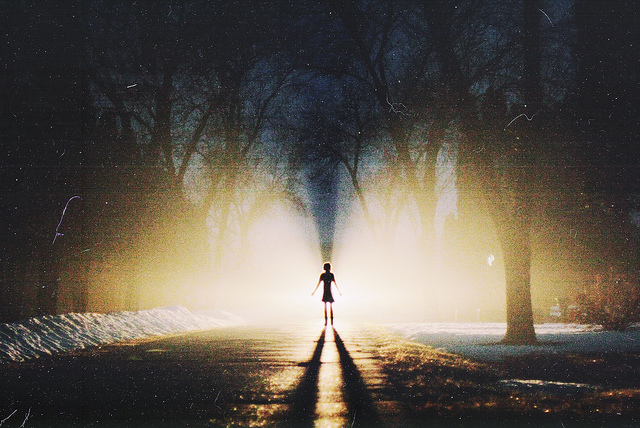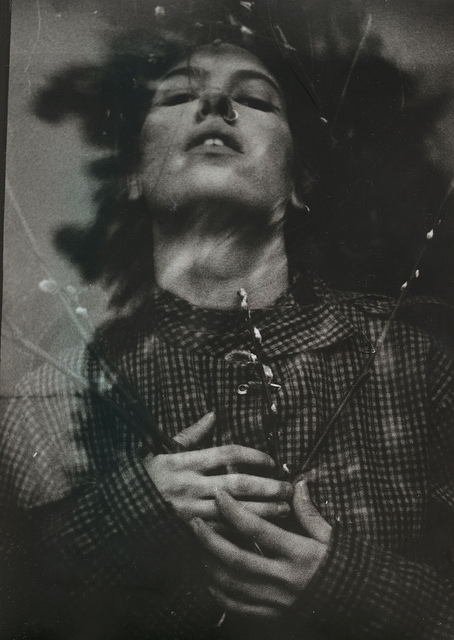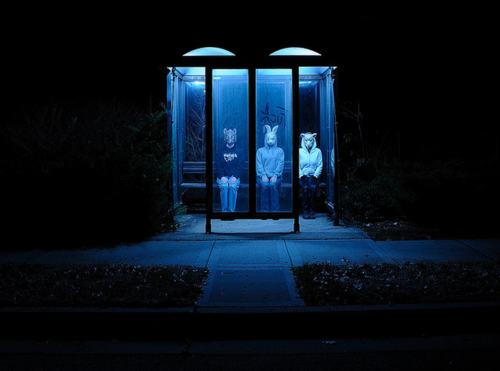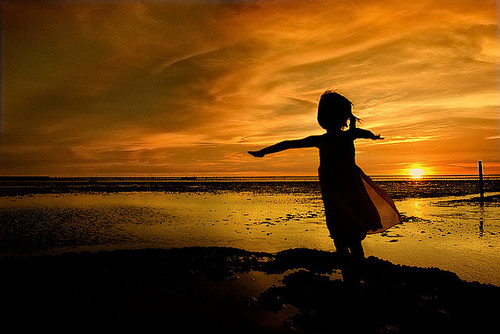Notes on a Talk by Michael Stone at Centre of Gravity, Toronto, May 6, 2013
Three Pictures
In the next few weeks, I’d like to explore the Buddha’s teachings before they turned into Buddhism. Let’s begin with three pictures. In the first picture, Bodhidharma, the person credited for bringing the Buddha’s teachings from India to China, met up with Emperor Wu. The Emperor asked him, “What are the Buddha’s teachings?” “Unholy boundlessness.” In other words: everything that is not holy. The Emperor asked him, “Then who is standing in front of me?” “I don’t know.” Imagine you’re at a party and someone asks your name and you reply “I don’t know.”
Here’s the second picture. There are two monks working in the kitchen weighing flax. “What is Buddha?” one asks. “Three pounds of flax,” replies the other. It’s an immediate answer, it points to what is happening right now, in this moment.
Here’s the third picture. A monk comes to Chinese maestro Yunmen and asks, “What is the teaching of the Buddha? (or: What is the work of the Buddha’s whole life?)” “An appropriate response.”
Religion
Each of these pictures asks us: how does the teaching come alive in your life, in each moment? We’re born and die. We have purpose and sometimes we don’t. We suffer pain and lose people we love. We don’t know what it means. Joy doesn’t last. And why do things get so bad? Religious life is what connects us with the ultimate ground that is our lives. I’d like to make a distinction between religious feeling (the is-ness of being, the feeling of being entirely taken up in a moment) and religion – which is the structure that grows out of that experience. Buddhism has now turned into a religion. Its pope is the Dalai Lama. Probably every culture has had religion, it’s a symbolic activity, like language. As soon as there is language, there is religion.
The Buddha was deeply engaged in his culture, and one of the principal means of engagement was through language. He was constantly reworking words so that familiar experiences and descriptions could be seen in a new way. If we want Buddhist values, rather than Buddhism, we need to work with the culture that holds and contains us. The culture is also inside you. The more you go back into the old texts, the further away you get from religion. What we don’t need at this moment is another religion. Instead, perhaps we could engage a living tradition, and uncover the values of these practices. This means having a conversation with the past, while being rooted in the soil of present experience.
Anti-Religious
The Buddha’s stance is anti-religious in a certain way. He uses what’s in religious practice to undo religious belief. The Buddha creates strategies, not dogmas. Bhavana is a horticultural metaphor. It means bringing something into being. If dharma is reduced to a set of practices, we actually miss the heart of the anti-authoritarian nature of the teachings. The Buddha believed that only a transformation of people from the heart out, person by person, was going to change society. But this personal transformation wasn’t possible without some basic justice and welfare for people. As long as human nature remained untransformed, any social structure no matter how well motivated, would eventually be subverted by human nature.
Buddhism looks so different in Japan, in Tibet, in Nepal. What does Buddhism look like in this city? In your life? We are going to try to strip Buddhist teachings of their religiosity in the hopes of finding out what the Buddha was doing. How do you get back to origins? Perhaps by focusing on the background. What was going on at the time, what was the Buddha responding to?
800 Years
The Buddha’s teachings were written centuries after his death. There are three baskets, and one of them is called the Nikayas. They grant a sense of the Buddha as a person and the times he lived in. A gold mine. Theraveda Buddhism (the way of the elders) is commonly held to be the earliest form of Buddhism. But the Buddha died in 400 BCE, and in 400CE, Buddhagosa wrote a compilation text called the Path of Purity. This is the core text of Theraveda Buddhism, written 800 years after his death. What happened in the 800 years before this text was written? The Nikayas offer a description of that time.
What was happening? Agrarian economies were being turned into larger city economies, and this surplus could support standing armies, and warring clans. It’s called the axial age. The Indian subcontinent wasn’t unified until King Ashoka in the 3rd century BCE.
Doing
Rabbi Hillel, Lao Tzu, Jesus, Buddha and Patanjali. They weren’t trying to create religions, but new kinds of people. Today religions are about joining a belief system. In ancient India it was more about what you do than what you believe. The Judeo-Christian translators of Buddhism have made his teachings look more religious (Abrahamic). For example: Christianity, Judaism and Islam can be called “orthodoxies.” You ascribe to propositions you believe in. But if you ask someone in Northern India and Southern India what Hinduism is, they will show you different kinds of rites and rituals. The way they perform these rites is what their religion is. Being a yogi is about what you do, not what you believe.
Brahmin
There was no Hinduism at the time of the Buddha, there was Brahminism. Brahmins referred to themselves as Arya (noble). You were noble by virtue of birth. Today, this would be like being born to rich parents. Aryan society was highly stratified. The Aryans moved south and displaced indigenous groups. They brought their own language to exercise power. There were four classes: 1. Brahmins were at the top. Priests and scholars (in charge of the rites and rituals). 2. Rulers and warriors. 3. Merchants. 4. Menials. (And 5. Indigenous populations who were displaced. Dalits, untouchables. This class lives beyond names and numbers.) The four classes were called The Vedic People. People of the Vedas. The Vedas are hymns and poems about practical things, “revealed texts.” At the time of the Buddha, Vedas were symbolic sacrifices.
Sanskrit was the language of the ruling class Brahmins. Intellectuals and rulers used Sanskrit. It means: to polish. The other classes used prakrt. (it means: debased language). Here was a highly stratified culture obsessed with order and fearing chaos. There was no social movement, it was only possible to move from one social class to another via rebirth. See you in your next life. Everyone had a duty and a place in society, this was called “ashrama.” It was thought this order (called rta) was cosmic. There’s a famous passage in the Gita that says “It’s better to do your own duty poorly than another’s well.” It really means: stick to your caste, to your place. When the Portugese invaded Goa (India’s smallest state) they called “class” “caste”. The caste system. The class system.
Law
The culture didn’t see itself as separate from the natural world. Created rituals pacified dissenting energies. The order of society was also the order of the world, so everything became deified – trees, water, wood, fire. The order of things was kept through a culture of sacrifice. What would be sacrificed? Animals, and humans of the lowest class. The lower down you are in society, the more impure. To be a good member of society means performing your sacrifices and hoping to be reincarnated in a better form. (Can you see why the Buddha critiqued this?) Rta (the cosmic order, fixed and unchanging) becomes dharma. Dharma means law. In the eighteenth century (when the word “Buddhism” was coined), the Buddha’s teachings were translated into English by judges and lawyers who were told the Buddha’s teachings were “dharma”, or the law. But the Buddha turned the idea of the law, it was no longer a set of rules to be followed, but the way experience arises out of conditions. It is a law rooted in changing experience, and insists that nothing is permanent, that everything we try to hold onto changes. Once again the Buddha takes something that is fixed and rule bound and sets it into motion.
In the Vedic world, rituals and religion and language were used to uphold a rigid social order. Women were slaves. Everyone wanted a male child. The ruling class were pure because of their parents. The majority of citizens were impure, poor, something lesser.
Dukkha
What is dukkha in this time? To live well: suastika. Not living well: duastika. Du became dukkha. Du: dirty, unpleasant, painful. Ka is from akasha: space. Dukkha means: a dirty space. An unpleasant space to live in. In Vedic society, dukkha referred to the hole an axle fit in. If the hole was worn and dirty, if the axle didn’t turn smoothly, that was named dukkha. It also denoted the centre of a wound. There is pain, and also the sense of a hole, of something absent.
Dukkha was something to be avoided, to be moved away from. How? You perform rituals for sukkah, for sweetness, not for dukkha. Keeping order for sukkah was called Samskara. It meant a ritual or habit. You performed rituals that were samskaras. And the outcome of samskara creates a pattern that is called karma. Rituals created habits. Habits lead to a better rebirth, a place up the ladder. The Buddha radically changed the meaning of these words. He said that dukkha was an inescapable part of being human, and it occurred whenever our experience included lack or difficulty right now, at this moment.
Rebel
Within a rigid society you get rebels and dissidents. People started to drop out of the new cities and went to the forests. They had a different vision of what a good life might be. Many small groups gathered round leaders (surprisingly, some were women), and they developed an oral tradition that was eventually turned into a literature called the Upanishads (600 BCE). It means to gather close, to listen. They deal with the big questions: what will happen to me when I die? Is there a soul? It was written in the very place the Buddha was born, he was familiar with them, and sometimes made fun of them. They used two primary terms: brahman and atman. Brahman means to expand. Brahman is God, it’s pure consciousness, it’s everything, eternal and unchanging. Atman is the self, the smaller piece of everything that is inside you. The pure and unchanging God part of you. The God in you. All change was called maya (or illusion). (A word the Buddha never used.) Everything that changes is maya, unreal. Interestingly, exactly the same ideas were happening in Greece with Socrates and Plato.
The Buddha went after these two terms, and once again tried to set these rigid eternal terms into motion. Instead of the fixed entities of brahman and atman, he devised the anatman – the not-self. He never said there was “no self”, he said there was “not self.” He insisted that the self wasn’t continuous. It’s moment to moment. Experience happens moment to moment. As soon as you objectify something eternal, you internalize an eternal subject, you create an infinite me to see the infinite God thing.




